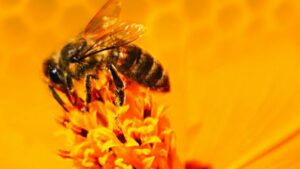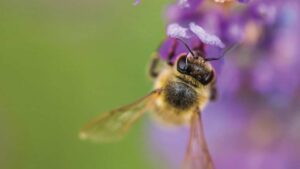Industry and growers in the European Union feel the negative impact caused by the ban on neonicotinoid insecticides.
In February 2013, the European Food Safety Agency identified a number of risks posed to bees by three neonicotinoid insecticides. The European Commission asked the agency to assess the risks associated with the use of clothianidin, imidacloprid and thiamethoxam as seed treatments or as granules.
Essentially, EFSA was to assess each seed treatment on its acute and chronic effects on bee colony survival and development; its effects on bee larvae and bee behavior; and the risks posed by sub-lethal doses of the three substances. Despite that in some cases EFSA was unable to finalize its assessments due to a lack of available data, the European Commission enacted a ban on the use of neonicotinoids Dec. 1, 2013.
Syngenta AG has seen some impact to its bottom line due to reduced sales of Cruiser, but it stresses that European farmers, who have been denied access to innovative and sustainable crop protection technologies, have felt a more significant impact. “Growers now have to use alternative products, many of which are older and less effective,” says Savina La Scalea, spokesperson at Syngenta International AG.
The European Seed Association says the ban has had a number of negative effects. “This ban means a big gap in the area of insecticide seed treatment in many key crops, such as oilseed-rape and maize,” says Ana Silva, ESA communications manager. “The ban has had some negative economic effects on the seed sector, and we expect this to get worse as we move into 2015.”
La Scalea adds that the suspension has done nothing to address diseases, viruses and loss of nutrition for pollinators, “which even the European Commission acknowledges as the biggest threat to pollinators.”
Billions at Stake
Since the ban came into effect, German-based Humboldt Forum for Food and Agriculture (HFFA) published the first comprehensive review of the value of neonicotinoid treated seeds.
Assessing the socio-economic and environmental contributions of neonicotinoid seed treatments in the EU, across the major crops and in key countries, the study found that “if neonicotinoid seed treatments were no longer available in Europe, there would be a significant reduction of food production, dramatically altering the commodities trade balance.” The HFFA study shows:
• Neonicotinoid seed treatments contribute more than €2 billion annually to EU commodity crop revenues.
• The value of neonicotinoid treated seed to growers versus not using pesticides at all exceeds €4 billion per year.
• If the ban continues over a five-year period, the EU could lose up to €17 billion and face significant pest pressure.
• If the technology remains under a ban, EU farmer income would decrease an average of 5 percent.
• At least 50,000 farm jobs would also be lost across the EU.
ESA’s Silva says it is difficult to grasp all of the effects at this time, but the modeling conducted by the HFFA study shows the economic benefits of neonicotinoid treated seeds.
“There is an increasing body of evidence supporting the view that neonicotinoid treated seed is one of the most effective and targeted forms of crop protection technology available,” La Scalea says.
The HFFA study also found that, “if used correctly, neonicotinoid seed treatments can be used safely for all major crops across Europe. The crop protection industry is engaging in active stewardship to ensure that this is the case. In addition, the seed, seed treatment and crop protection industries have recently implemented quality assurance and user information measures to further improve safe use.”
With stricter authorization criteria and a hazard-based assessment approach, ESA fears that even more products will disappear or not make it to market. As a result, ESA has developed the European Seed Treatment Assurance Scheme (ESTA) to ensure quality application of plant protection products to the seed during the treatment process, as well as the proper handling and safe use of quality treated seed. Only ESTA certified treatment facilities can use the ESTA logo on their products to document compliance and facilitate the free movement of treated seed throughout the European Union.
Syngenta has also implemented its own stewardship solutions. For more than a decade, Operation Pollinator has been placing pollinator habitats and nutrition back into farm landscapes. “Our biggest disappointment is that farmers will continue to be denied access to this crop protection technology, while nothing is done to improve bee health,” La Scalea says.
Shannon Schindle
 |
For the entire results of the study conducted by Humboldt Forum for Food and Agriculture, check out neonicreport.com/home/project-compass/. |














